US$ 29.000 para um carro usado médio? Os possíveis compradores estão horrorizados
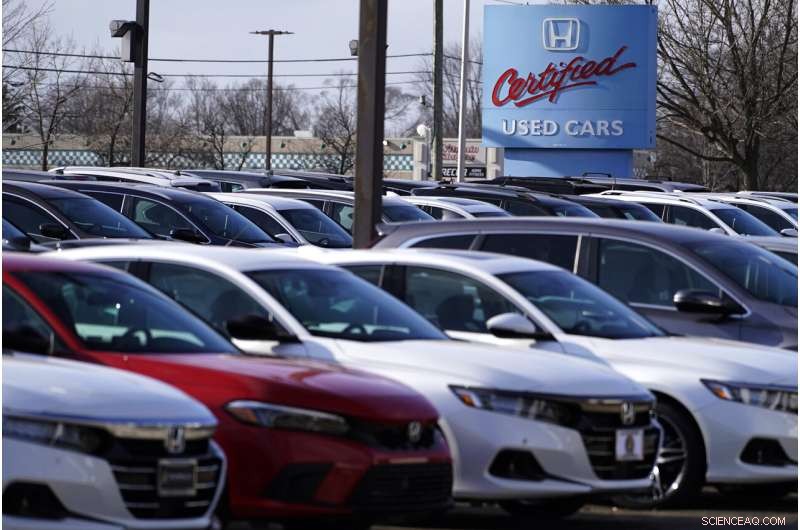
Uma placa de concessionária é vista do lado de fora da concessionária de carros usados certificada pela Honda em Schaumburg, Illinois, quinta-feira, 16 de dezembro de 2021. Os preços dos carros usados subiram tão alto, tão rápido, que os compradores estão cada vez mais fora do mercado. Crédito:AP Photo/Nam Y. Huh
Alguns meses atrás, uma mulher visitou a loja de carros usados de Jeff Schrier em Omaha, Nebraska. Ela estava com um orçamento apertado, disse ela, e estava desesperada por um veículo para ir ao trabalho.
Ela foi mostrada três carros com preço em seu limite, cerca de US $ 7.500. Schrier disse que a mulher ficou atordoada.
"'É isso que recebo por US$ 7.500? '", ele lembrou que ela disse. Os veículos tinham muito mais idade ou quilometragem do que ela esperava para substituir um carro que tinha sido destruído em um acidente.
A mulher acabou se decidindo por um Toyota Scion 2013 com impressionantes 160.000 milhas. Schrier não tem certeza de ter lucrado com o negócio. "Nós apenas a ajudamos", disse ele.
À medida que os preços dos veículos usados ultrapassam qualquer nível aparentemente racional, é o tipo de cenário que ocorre em muitas concessionárias de automóveis em todo o país. Os preços subiram tão alto, tão rápido, que os compradores estão sendo cada vez mais excluídos do mercado.
Considere que o preço médio de um veículo usado nos Estados Unidos em novembro, de acordo com Edmunds.com, foi de US$ 29.011 – um vertiginoso 39% a mais do que apenas 12 meses antes. E pela primeira vez que alguém possa se lembrar, mais da metade dos lares americanos tem menos renda do que o necessário para comprar o veículo usado de preço médio.
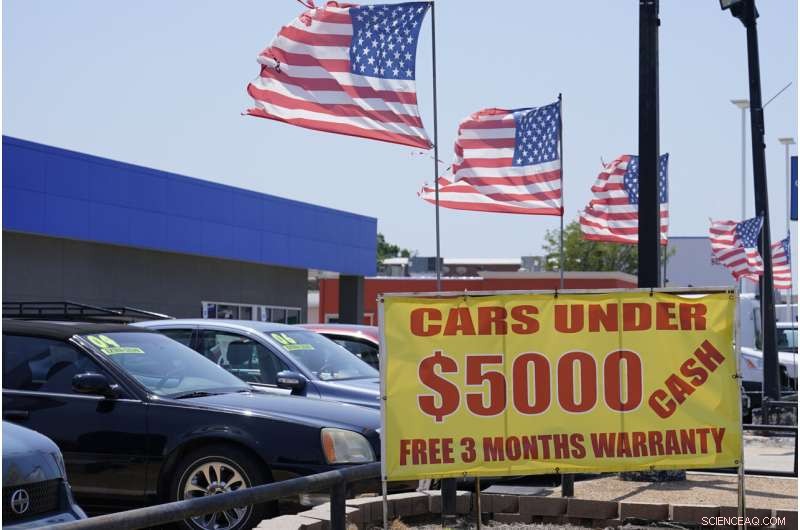
Os carros usados à venda estão em exibição na quinta-feira, 24 de junho de 2021, em Oklahoma City. Os preços dos carros usados subiram tão alto, tão rápido, que os compradores estão sendo cada vez mais excluídos do mercado. Crédito:AP Photo/Sue Ogrocki
Os dias em que praticamente qualquer pessoa com uma renda estável podia vagar em uma loja de automóveis e pegar um carro confiável de último modelo ou comprar o primeiro veículo de seu filho por alguns milhares de dólares praticamente desapareceram.
"Nunca vi nada remotamente parecido com isso - é uma loucura", disse Schrier, que vende automóveis há 35 anos. "É bastante frustrante para tantas pessoas agora."
Quando o governo informou que a inflação ao consumidor disparou 6,8% nos 12 meses encerrados em novembro – o salto mais acentuado em quase 40 anos – o maior fator, além da energia, foram os veículos usados. E embora a taxa de aumento esteja diminuindo, a maioria dos especialistas diz que os preços inflacionados dos veículos provavelmente não diminuirão no futuro próximo.
The blame can be traced directly to the pandemic's eruption in March of last year. Auto plants suspended production to try to slow the virus' spread. As sales of new vehicles sank, fewer people traded in used cars and trucks. At the same time, demand for laptops and monitors from people stuck at home led semiconductor makers to shift production from autos, which depend on such chips, to consumer electronics.
When a swifter-than-expected economic rebound boosted demand for vehicles, auto plants tried to restore full production. But chip makers couldn't respond fast enough. And rental car companies and other fleet buyers, unable to acquire new vehicles, stopped off-loading older ones, thereby compounding the shortage of used vehicles.
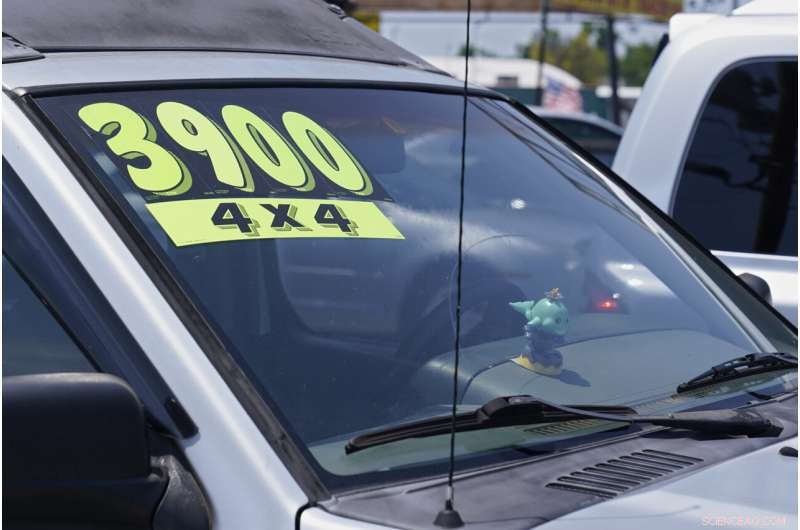
Used cars for sale are on display Thursday, June 24, 2021, in Oklahoma City. Prices for used cars have soared so high, so fast, that buyers are being increasingly priced out of the market. Credit:AP Photo/Sue Ogrocki
Bleak as the market is for used-car buyers, the computer chip shortage has also driven new-vehicle prices higher. The average new vehicle, Edmunds.com says, is edging toward $46,000.
Even so, prices of used cars are likely to edge closer to new ones. Since the pandemic started, used vehicle prices have jumped 42%—more than double the increase for new ones. Last month, the average used vehicle price was 63% of the average new vehicle cost. Before the pandemic, it was 54%.
At this point, Schrier has to tell lower-income buyers that he has very few used vehicles to sell them.
"What used to be a $5,000 car," he said, "is now $8,000. What used to be $8,000 is now $11,000 or $12,000."
Including taxes, fees, a 10% down payment, and an interest rate of around 7.5%, the average used vehicle now costs $520 a month, even when financed for the average of nearly six years, Edmunds calculated.

This June 24, 2021 photo shows used cars for sale in Oklahoma City. Prices for used cars have soared so high, so fast, that buyers are being increasingly priced out of the market. Credit:AP Photo/Sue Ogrocki
Ivan Drury, a senior manager at Edmunds, said that while he doesn't track used vehicle prices relative to household income, he thinks November marked a record "in the worst way possible for affordability."
Monthly payments for the average used vehicle, he noted, were $413 two years ago, $382 five years ago and $365 a decade ago. The November average payment of $500-plus for a used vehicle, Drury said, is about the average that was needed five years ago for a brand-new vehicle.
Used vehicle prices are so high that Karl Hogan of Canonsburg, Pennsylvania, near Pittsburgh, was able last month to quickly sell his 2007 Toyota Tacoma small pickup truck, with more than 170,000 miles on it. Even with the vehicle's age and mileage, a man from Ohio forked over $6,500 for it.
Hogan didn't have to budge from the asking price. When some would-be buyers offered him less money, he told them:"I've got 12 other guys behind you."
A week before the sale, when he bought his new Tacoma, Hogan had been on the other side of the equation. The dealer wouldn't budge from his $38,000 sticker price.
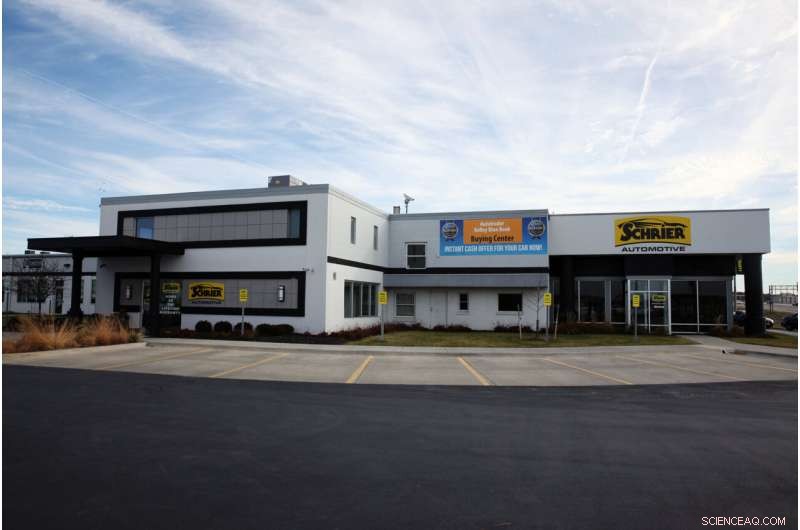
Schrier Automotive in Omaha, Nebraska, sits with a partially empty sales lot caused by high demand for cars on Monday, Nov. 29, 2021. Prices for used cars have soared so high, so fast, that buyers are being increasingly priced out of the market. AP Photo/Grant Schulte)
"If I didn't take it," Hogan said, "there were three people waiting. I couldn't get any off, but I wanted a new truck."
David Paris, a senior manager at J.D. Power, noted that used vehicle prices are directly tied to the cost of new ones. Though some automakers report that the computer chip supply is gradually improving, prices paid by dealers at used vehicle auctions kept rising through November, Paris said.
"We're not seeing any softening in prices, which is extremely rare for this time of the year," he said.
New vehicle dealers have about 1 million vehicles available nationally—scarcely one-third of the normal supply, Paris said. And the vast majority have already been sold.
Given pent-up demand from consumers, prices for new vehicles are expected to remain historically high until the supply returns to around 2 million or 2.5 million and automakers resume discounting, which could take well into 2023. Once new vehicle prices do ease, the pressure on used-vehicle prices would eventually follow.
-
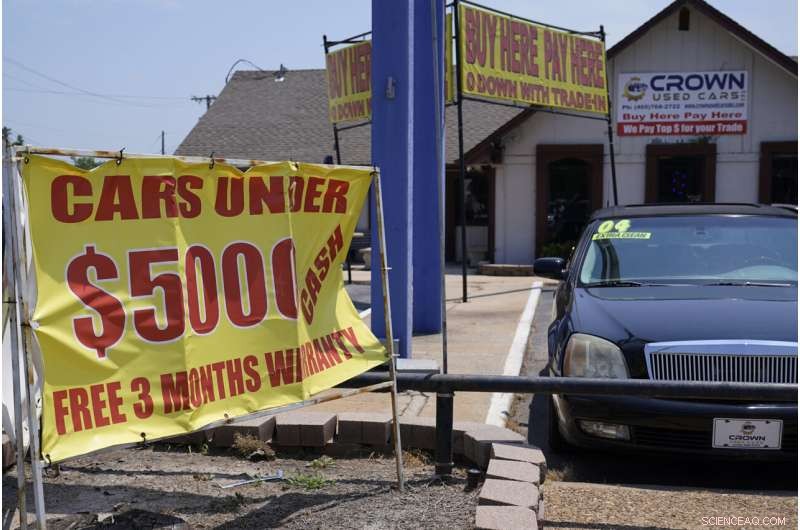
Used cars for sale are pictured Thursday, June 24, 2021, in Oklahoma City. Prices for used cars have soared so high, so fast, that buyers are being increasingly priced out of the market. Credit:AP Photo/Sue Ogrocki
-
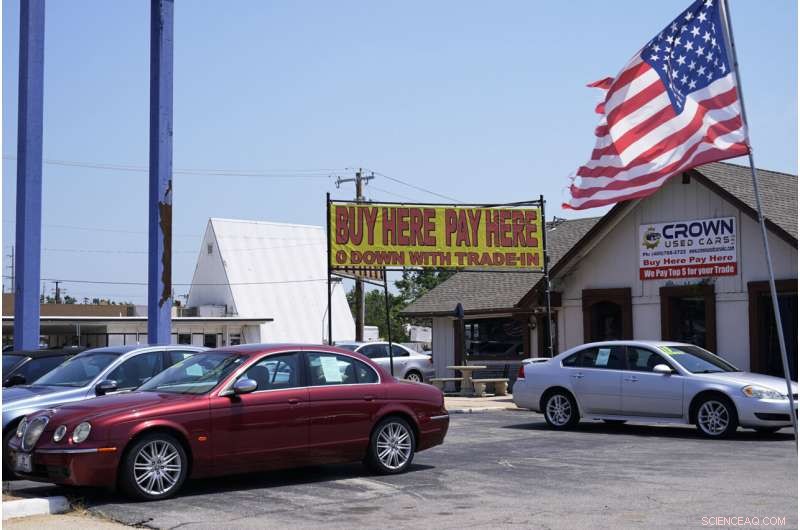
Used cars for sale are pictured Thursday, June 24, 2021, in Oklahoma City. Prices for used cars have soared so high, so fast, that buyers are being increasingly priced out of the market. Credit:AP Photo/Sue Ogrocki
Yet even after that, the availability of vehicles will be tight because traditional sources of used vehicles—autos turned in from leases and trade-ins or sold by rental companies—have essentially dried up.
For the past decade, cars returning from two- and three-year leases were a leading source of almost-new used vehicles. But that was when more than one-third of U.S. new vehicle sales were leases, a figure now down to 22%, said Edmunds' Drury. Because there aren't many new autos, people with expiring leases are often buying those cars once their leases end.
Rental companies, another key source of late-model used cars, can't buy new ones now and are holding the ones they have. Some rental companies are even buying used vehicles. Given all those factors, Paris expects the shortage of used cars to worsen through 2024.
Among the few consumers who stand to benefit are those who want to sell a used car and don't necessarily need to replace it. The average trade-in value in October, Paris said, was $9,000—twice what it was a year earlier.
But for people who have no vehicles to trade in and only modest incomes, the options are few to none. J.D. Power's Paris says that if they can afford it, buyers should consider a new vehicle. He recently managed to get a couple thousand dollars whacked off the sticker price on a new Ram pickup, though he had to travel from the Washington, D.C., area to Philadelphia to reach a willing dealer he had located by searching internet forums.
"If you look hard enough and are willing to wait and travel," he said, "you can find deals across most brands."






